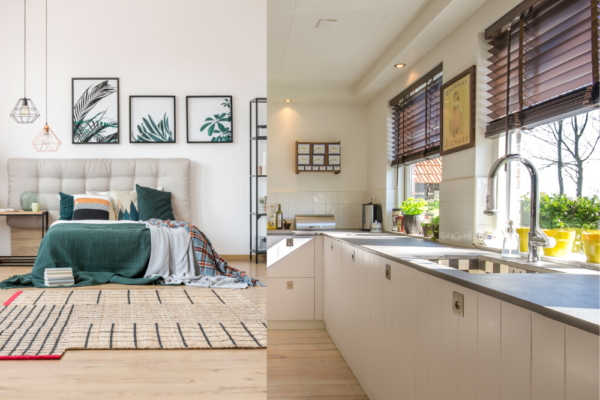Opting for a minimalist home design doesn’t mean you have to forfeit originality.
Minimalism is all about choosing pieces for your home intentionally and mindfully. Everything you put in your home should be something you’ve chosen with care so that you truly value it.
It doesn’t mean that a minimalist interior is lifeless or dull. On the contrary, minimalism is about decorating your home only with furniture and decor that inspires or serves a purpose.
How exactly can you design a creative home with a personality that is also minimalist? Here are some tips.
Utilise Pops of Colour
There is a reason so many minimalism-inspired spaces have pale neutral colour palettes. These colours make rooms seem larger by reflecting light

However, you don’t have to forego colour splashes altogether. When you opt for a more neutral colour palette, a small splash of colour in the form of a vase or painting will genuinely pop.
Choose Furniture That’s Comfortable
Minimalist furniture favours sleek lines and geometric shapes. The design aesthetic means the furniture takes up less space, making your home seem more open and airy.
There is no rule that minimalist furniture has to be uncomfortable or austere. Indeed, uncomfortable furniture is contrary to the minimalist idea that everything in your home should be functional.

A living room can feature comfortable couches and chairs while still embracing the minimalist principles of symmetry and simplicity.
Select Items with a Purpose
Minimalism started as an art movement and a critique of consumerism. It values functional items more than decorative ones.
When selecting pieces for your home, ask yourself what function they serve. If you are adding a shelf to a room, be sure it provides storage space rather than just serving as an aesthetic accent.
Quality is more important than quantity. Rather than filling a room with trendy accents, consider investing in a few well-made pieces instead.

Select Artwork with Care
In a minimalist space, the walls will be mostly bare. Select a few large pieces that speak to you. When you have less artwork on the walls, the elements you do feature will stand out.
Display Your Interests
To create a minimalist space that feels authentic to you, let your passions shine. Although you shouldn’t have too many accent pieces, a few that reflect your interests can add personality.
Whether your passion is literature, travel, fashion, or animals, find accent pieces or artwork that emphasise who you are.

Incorporate Contrast
Contrast brings life to a room without the need for a lot of material possessions. Contrasting industrial materials such as glass or metal with warm, rustic materials such as timber or stone has a dynamic effect on a space.
You can also incorporate a contrast between historical periods. For example, set a vintage lamp next to a modern leather armchair for a mix of old and new.
Consider Texture
Even though the minimalist decor is simple, it should still be inviting and cosy. Adding comforting textures to your space is a great way to achieve this.
A natural-fibre rug, leather chairs, or soft throw blankets are a great way to add texture to a minimalist home.
Contrasting textures also make for a more dynamic space. A soft, velvet chair next to a rough stone end table can be a perfect juxtaposition.

Play with Proportions
Just because symmetry is favourable for furniture in minimalist design, it doesn’t mean everything in your space should be symmetrical.
For example, if you’re aligning a few decorative pieces on a shelf, play around with placing items of different proportions next to each other.
It’s quite visually boring to have three vases of the same height in a row. Far more exciting is when you place a large plant by a small side table or a large work of art next to a little clock.
Put Everything in Its Place
In a minimalist home, there should be a place for everything. Keep floors and surfaces free from clutter and store items you don’t use every day out of sight.
You should always store your possessions according to your individual needs. There is no right or wrong place to store kitchen appliances, for example. You should store items near the location you use them, and keep things you use most often in the easiest to reach spots.
Remember that if you feel completely stumped as to where to store something, there’s a chance you don’t need it. If you can’t make room for something in storage and you won’t use it regularly, consider letting it go.
In a minimalist home, there should be a place for everything.
Final Thoughts
There are many misconceptions about minimalist home design. You don’t need to sacrifice personality or creativity to have a minimalist home.
For more creative home design inspirations, check out our website for minimalist furniture with personality!

